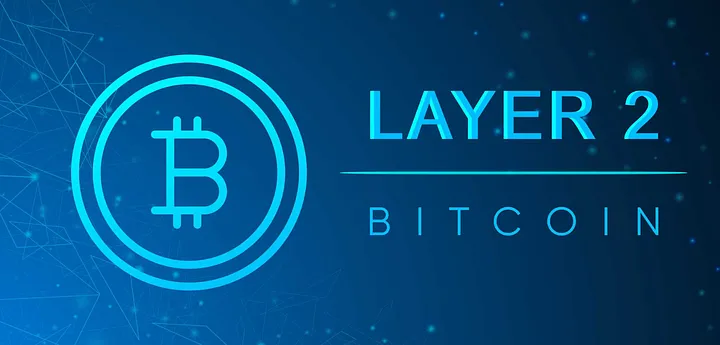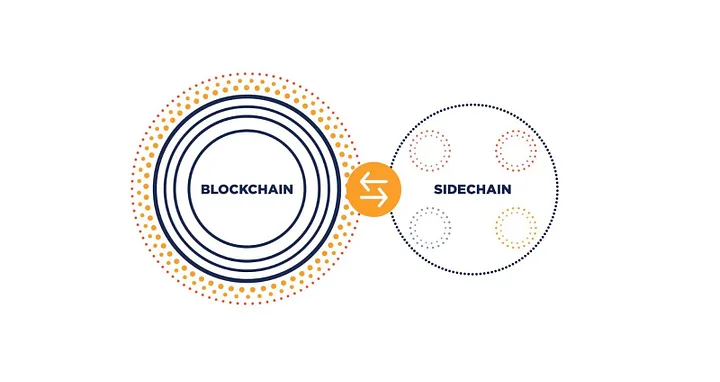This article discusses the current direction of the Bitcoin ecosystem and provides an overview of the current Bitcoin ecosystem, noting that no investment advice is provided.
Author: YBB / Source
Plain language blockchain
1. Preface
2023 is a significant year for the Bitcoin ecosystem, as it reaches a new peak. By the end of the year, amidst significant challenges in both digital assets and traditional markets, the ecosystem's dormant state has experienced a revival. Despite some opposition to the explosive growth of inscriptions, it is undeniable that the market's enthusiasm has brought about a resurgence of the "builder culture" of Bitcoin. This momentum has driven a wave of Bitcoin innovation, most notably, the narrative of the market's enthusiasm for inscriptions has spread to other public chains.
This article discusses the current direction of the Bitcoin ecosystem and provides an overview of the current Bitcoin ecosystem, noting that no investment advice is provided.
2. Popular Protocols in the BTC Market
The Bitcoin asset issuance protocol experienced rapid growth in the first quarter of 2023, followed by a prosperous market in the fourth quarter. Particularly within the Ordinals protocol ecosystem, various tokens represented by BRC20 have triggered significant wealth effects, fueling FOMO sentiment in the market. Although it is just a JSON script file added to the Bitcoin blockchain, it has still been driven upward by the Bitcoin blockchain.
As time has passed, more prominent protocols have emerged, including Ordinals, Atomicals, Taproot Assets, Runes, and PIPE. This trend clearly indicates that the Bitcoin ecosystem is evolving towards greater diversification and innovation, as asset issuance protocols provide a broader outlook for the market. A series of choices and richer growth opportunities are leading the Bitcoin ecosystem towards greater diversification and innovation.
1) Ordinals Protocol (BRC-20)
In January 2023, Bitcoin developer Casey Rodarmor released the Ordinals protocol, which is an asset issuance protocol based on Bitcoin, consisting of two core components: Ordinals ordinal theory and Inscription.
Casey, the author of the Ordinals protocol, carries content on UTXO in the following way: a unique identifier is allocated to the smallest unit of Bitcoin, 21 trillion satoshis. On the other hand, inscription is the process of associating content with unspent transaction outputs (UTXO). The asset issuance process of the Ordinals protocol is similar to writing information into witness data and using the BRC20 form to record token information in JSON format.
BRC-20 Token
BRC-20 is an experimental Bitcoin token standard created by Domo on March 8, 2023, with the core concept of using Ordinal Inscriptions' JSON data. Through the BRC-20 standard, users can easily implement key functions such as token contract creation (Deploy), token minting (Mint), and token transfer (Transfer). As of December 18, 2023, statistics show that the total market value of BRC-20 has reached $640 million, highlighting the importance of this cryptocurrency standard in the Bitcoin ecosystem and opening up new possibilities for the development of digital assets.
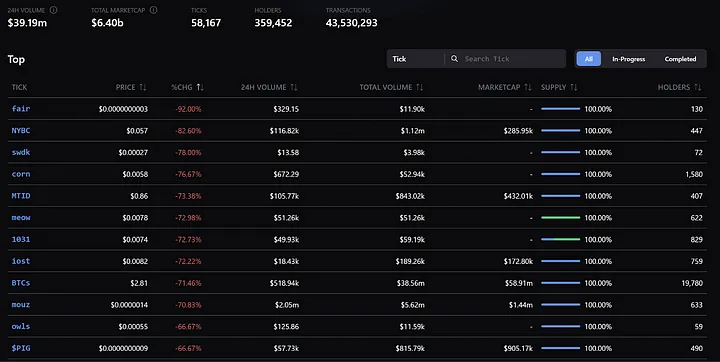
2) BRC-100
BRC-100 is a Bitcoin DeFi protocol built on Ordinals. In addition to its own token properties, BRC-100 is also an application protocol, allowing developers to design application-based products based on the BRC-100 protocol. According to developer MikaelBTC, BRC-100 introduces protocol inheritance, nested application programs, state machine models, and decentralized governance, bringing computational capabilities to the Bitcoin blockchain and making it possible to build AMM DEX, borrowing, and other Bitcoin-native decentralized applications.
3) Ordinal NFT
Software engineer Casey Rodarmor has launched the Ordinals NFT protocol on the Bitcoin blockchain, which is now live. Users can now create and own their NFTs on satoshis (sats), the smallest unit of Bitcoin, using a random but logical ordering system that makes each satoshi unique.
Compared to Ethereum NFTs, Ordinal NFTs are described as having three main differences:
- Related data is stored in the Bitcoin network, not relying on external storage such as IPFS, AWS S3, etc.
- Permissionless: transactions can be completed in a decentralized manner through PSBT, without "authorization".
- Coining costs are proportional to transaction volume.
4) BRC-420
According to the official RCSV Gitbook, BRC-420 focuses on on-chain inscription modularization, including two key components: metaverse standards and royalty standards, defining open and flexible formats for assets in the metaverse, as well as specific on-chain protocols for creator economies. Unlike other Ordinals protocols (single inscription), the BRC-420 protocol uses a recursive combination of multiple inscriptions.
5) Atomic Protocol (ARC-20)

The Atomic Protocol, also known as the Atomic Protocol, covers various asset types such as homogenized TokenARC20 Standard, NFT, Realm, Collection Containers, etc. As a blockchain asset issuance protocol based on UTXO, Atomicals provides two coinage methods, decentralized coinage and direct coinage. The decentralized coinage method introduces Bitwork Mining, a coinage method based on the PoW (Proof of Work) model. The protocol uses the smallest unit of Bitcoin, "satoshi," as the smallest unit for issuing assets, with the smallest detachable unit currently being 546 ATOM, and the minimum sale or transferable ATOM being 546.
The difference between the Atomicals protocol and Ordinals lies in the ordering of asset transactions. It does not rely on third-party sorters and can be used to create (mint), transfer, and upgrade various digital items, including native NFTs, games, digital identities, domains, and social networks. In addition, the protocol supports creating alternative tokens with the name ATOM (different only in name from Cosmos' ATOM).
Recently, founder Arthur shared his views on the Meta Protocol in an interview on December 13th. He sees the Meta Protocol as a new way to allow developers to create their own data structures and rules without being limited to using existing strict structures. Protocols representing the Meta Protocol (such as the Atomic Protocol) continue to emerge, providing developers with the opportunity to create entirely new structures using smart contracts. This trend allows creators to focus more on the Atomic Virtual Machine (AVM). The introduction of this virtual machine enables developers to build smart contract programs on the Bitcoin network, providing them with a way to create unprecedented experiences. This means that creators can focus more on implementing smart contracts in the Bitcoin ecosystem, driving digital innovation forward.
Atomic Asset Types:
ARC20: Similar to the BRC20 token format standard on Ordinals.
Realm: A new concept proposed by Atomicals, aiming to disrupt traditional domain names and be used as a prefix.
Collection Containers: A data type used to define NFT collections, mainly for storing readable NFTs and related metadata. As of December 20th, the current market value of the top-ranked TOOTHY is 46.12 BTC, with a 7-day trading volume of 25.74 BTC.
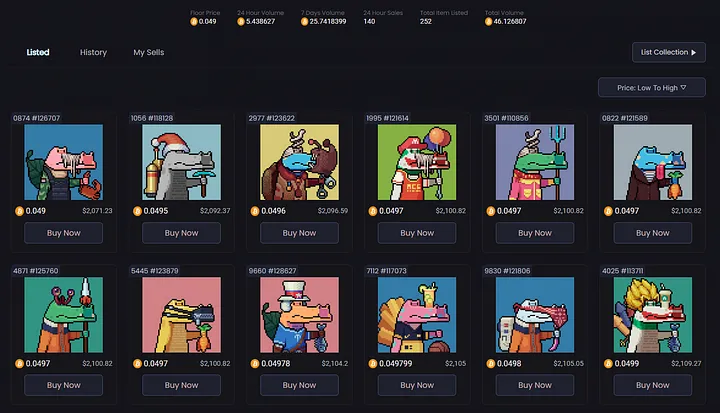
ARC-20 AVM: Atomicals founder Arthur stated in an interview on December 13th that the Meta Protocol is a new way for developers to create their own data structures and rules without being constrained by existing strict structures. Meta protocols such as the Atomic Protocol continue to emerge, allowing developers to create entirely new structures using smart contracts. This enables creators to focus on the Atomic Virtual Machine (AVM), which allows developers to build smart contract programs on the Bitcoin network.
6) Runes
Runes, proposed by Casey Rodarmor, the creator of the Ordinals protocol, aims to address the efficiency issues present in BRC-20. Unlike the complexity of some protocols, the design of Runes is simple and elegant. By using OP_RETURN in transactions, Runes prompts the allocation of tokens to specific UTXOs with output index, token count, and token ID.
The Runes protocol is a homogenized token (Fungible Token) protocol based on the Bitcoin UTXO model, managing and transferring through simple tuples (ID, OUTPUT, AMOUNT) and the OP_RETURN operation. Its main feature is the simplicity of the protocol, optimizing on-chain data usage by supporting certain operations without the need for additional off-chain data or native tokens.
The proposal of the Runes protocol was due to Casey's dissatisfaction with BRC20 using the Ordinals protocol to create a large number of UTXOs. Currently, the Runes protocol is still an idea of Casey's, without a complete client or development tools, although it is controversial in some areas.
7) PIPE
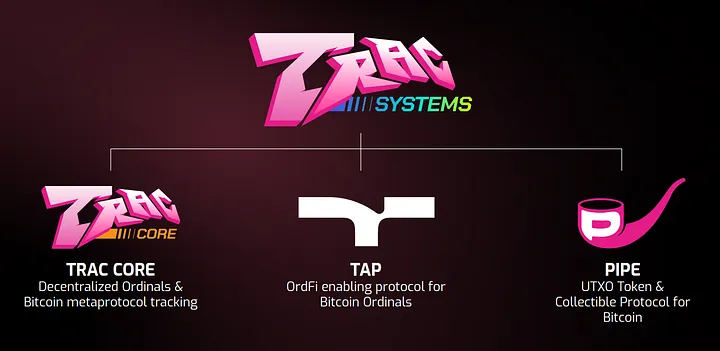
The PIPE protocol is an asset issuance protocol developed by developer Benny, inspired by the design of the Runes protocol by Casey and the BRC-20 standard based on Ordinals proposed by Domo. The PIPE protocol cleverly combines the features of the Runes protocol and introduces these two protocols, introducing three protocols in the BTC ecosystem: Trac Core, Tap, and Pipe (referred to as TTP, collectively known as Trac Systems).
The main functions of the PIPE protocol include deployment, minting, and transfer (referred to as DMT), making it easy to create, distribute, and transfer PIPE protocol assets within the Bitcoin network. In addition to supporting fungible tokens, the PIPE protocol also provides a complete data structure and standard for non-fungible tokens.
Trac Core: A prophecy machine and decentralized indexer for Bitcoin inscriptions.
Tap: An extension of the Ordinals protocol rather than a fork, making it seamlessly compatible with BRC20.
Pipe: A new protocol forked from Ordinals, but the actual process requires the recasting of liquidity.
TracToken: Deployed in the Ordinals-BRC20 protocol, later used as the governance token for the Tap protocol.
TAP Token: Deployed in the Ordinals-Tap protocol.
8) Stamp (SRC-20)
On December 6th, Bitcoin Core developer Luke Dashjr revealed on social media that Inscriptions is exploiting a vulnerability in the Bitcoin Core client to send spam to the blockchain. This vulnerability allows users to set additional data size limits on transactions when relaying or mining, and Inscriptions bypasses this limit by disguising its data as program code. Dashjr stated that the vulnerability will be fixed in version 27 next year. However, when answering questions related to inscriptions, he claimed that inscriptions themselves do not exist and are a scam.
This statement poured "cold water" on the Ordinals ecosystem, leading to significant fluctuations in BRC-20 token prices, with a single-day price drop of over 25% for ORDI. Critics of Dashjr believe that the Bitcoin network belongs to the community, and developers have no right to decide the fate of the Ordinals protocol based on personal preferences. Even if Dashjr completes the update of the Bitcoin program, as long as miners do not adopt the updated program, the entire Bitcoin network cannot complete the upgrade.
Although the controversy about inscriptions has not been finally determined, this debacle has sparked reflection on Ordinals and the essence of blockchain, and has drawn attention to another token standard SRC-20 and the Bitcoin stamp protocol (a derivative protocol using the Bitcoin stamp protocol). Bitcoin's UTXO serves as a data storage medium, storing arbitrary data through Bitcoin's OP_RETURN function. This protocol will result in larger Bitcoin blocks, bringing centralization risks and higher network operating costs.
The Bitcoin Stamps protocol was created by Mike In Space and is based on the Counterparty (XCP) protocol, making it the first NFT token protocol standard on the Bitcoin blockchain. Stamps encode image data as Base64 strings and store them in Bitcoin UTXOs, placing a greater emphasis on data reliability than Ordinals. The data is reliable and cannot be permanently deleted from the public Bitcoin ledger.
This controversy has sparked reflections on Ordinals and the essence of blockchain, as well as piqued interest in the SRC-20 standard and the Bitcoin Stamps protocol. SRC-20, similar to BRC-20, avoids the controversies associated with Ordinals. Bitcoin Stamps use image data directly written into Bitcoin UTXOs, emphasizing data reliability and immutability.
9) Turing Completeness Extension:
The Turing machine is an abstract computational model proposed by Alan Turing in 1936, used to define the concept of computability. Turing completeness is a concept related to computational theory, referring to whether a computing system can simulate the computation process of any Turing machine. The key point is that if a computing system is Turing complete, it has the ability to execute any computation process of a Turing machine. It is worth noting that the Bitcoin blockchain itself is not Turing complete. In the blockchain's impossibility triangle, the decentralization and security of the blockchain are achieved by completely sacrificing scalability. This design choice helps prevent malicious code from running on the Bitcoin network, thereby maintaining the network's security and stability.
Bitcoin Virtual Machine
On October 9th, Robin Linus, the project lead of ZeroSync, released a whitepaper titled "BitVM: Computing Anything on Bitcoin," sparking discussions about increasing Bitcoin's programmability. BitVM represents the Bitcoin Virtual Machine. It proposes a Turing complete solution for Bitcoin contracts that can be achieved without changing the Bitcoin network consensus, allowing any computable function to be verified on Bitcoin and enabling developers to run complex contracts on Bitcoin without altering its basic rules.
BitVM is a new Optimistic Rollup + Fraudproof + Taproot Leaf + Bitcoin Script computing paradigm. It represents the "Bitcoin Virtual Machine." It allows developers to simulate program behavior without imposing any additional load or changes on the actual Bitcoin network. BitVM achieves this extension through its unique scheme, which consists of the following key roles:
- Provers and Verifiers: The former create proofs using information from the input system, and the latter verify the computation of the proof without knowing the specific content of the information to ensure its accuracy.
- Off-chain computation and on-chain proof: Without changing the Bitcoin consensus, BitVM undoubtedly needs to move a large amount of computation and scaling off-chain to increase flexibility.
10) RGB
RGB is a member of the LNP/BP Standards Association (Lightning Network Protocol/Bitcoin Protocol), a non-profit organization responsible for overseeing the development of various layers of Bitcoin, covering Bitcoin protocol, Lightning Network protocol, and smart contracts such as RGB. The RGB protocol is suitable for scalable and private Bitcoin and Lightning Network smart contract systems, aiming to introduce the Bitcoin ecosystem by running complex smart contracts on UTXOs. The official description is: a scalable and confidential smart contract protocol for Bitcoin and the Lightning Network, used for broader issuance and transfer of assets and rights.
3. Layer2 Expansion Programs
1) Stacks
Stacks is a second-layer solution that supports smart contracts on Bitcoin, aiming to achieve high decentralization and scalability by linking itself to the Bitcoin blockchain through its unique "proof of transfer" consensus mechanism (PoX). Stacks is an open-source second-layer Bitcoin blockchain that brings smart contracts and decentralized applications to Bitcoin. Stacks, originally known as Blockstack, began in 2013. The technical architecture of Stacks consists of the core layer and subnets, allowing developers and users to choose between the two. The mainnet is highly decentralized but has lower throughput, while the subnets have lower decentralization but higher throughput. The Nakamoto update by Stacks will significantly improve network performance and introduce an important product—SBTC.
- Stacks has updated a version called Nakamoto, which not only allows Stacks to settle Bitcoin transactions but also upgrades to 100% Bitcoin reorg resistance and increases the speed of Stacks, allowing for an estimated block time of 5 seconds.
- SBTC introduces decentralization and native anchoring, increasing the total locked value (TVL) and user base of the Stacks network by issuing stablecoins based on SBTC.
2) Lightning Network
The Lightning Network is a second-layer scaling solution for the Bitcoin network, aiming to address scalability and transaction speed issues. It is a smart contract-based payment protocol that allows participants to make fast, low-cost micropayments without recording every transaction on the Bitcoin blockchain.
In the Lightning Network, participants can open multi-signature payment channels and conduct almost instant payments within the channel, avoiding the need for every transaction to occur on the Bitcoin main chain. Actual settlement on the Bitcoin main chain only occurs when the channel is opened and closed. This allows the Lightning Network to significantly increase the processing capacity of the Bitcoin network, reduce transaction fees, and accelerate transaction confirmations.
The Lightning Network uses a similar routing method used in networks to pass payments from one node to another, forming a payment network that covers the entire network. This design allows participants to make payments by linking across nodes and channels, achieving a high level of interconnectedness. Its core features include:
- Stablecoin Issuance: Using the value of Bitcoin itself to provide users with stablecoins in the borderless financial world, for example, creating a new stablecoin taUSD and executing DeFi operations by transferring BTC and taUSD into the Lightning Network channel through a single Bitcoin transaction.
- Multiple Universe Modes: Universe is a repository that stores all the information required to initialize Taproot asset wallets and synchronize specific Taproot asset states.
- Asset Issuance and Redemption API: Users can easily trade various assets on Bitcoin like investing in real-world stocks and bonds, mapping to the issuance of real-world assets.
- Asynchronous Receive Function: Provides developers with tools to add Uniform Resource Identifiers (URIs) to on-chain addresses.
- Scalability: The new feature "build-loadtest" command allows developers to stress test their software.
3) Multi-Dimensional Controller
MVC is a revolutionary public chain that integrates multiple innovations. On December 8th, Jason Kwok, the COO of the Bitcoin sidechain MVC, announced the roadmap for the first quarter of MVC next year, stating that the development of the Bitcoin cross-chain bridge will be completed. Utilizing Layer1 DID and smart contract technology to deliver the Bitcoin Virtual Machine (MVC), aiming to lead 8 billion users into the Web3 era as a top blockchain.
MVC will undergo nine major updates in the first quarter of next year: building a trustless asset bridge; releasing two Bitcoin-compatible wallets; using a new block explorer; built-in support for Ordinals and BRC-20; Metacontract integrated development environment; MetaID Bitcoin version; compatibility of MVC/BTC with DEX orders; enabling the first building proof; and launching MVC Node V0.2.
4) BEVM
BEVM is a fully decentralized BTC Layer2 project that achieves full-chain decentralization to BTC Layer2 through Musig2 aggregated multi-signature technology and Bitcoin light nodes, enabling BTC to escape the limitations of the Bitcoin blockchain's non-Turing completeness and lack of support for smart contracts by extending EVM compatibility, allowing the construction of decentralized applications using BTC as native Gas.
Leveraging the Schnorr signature and Mast contract brought by the Taproot upgrade, BEVM achieves decentralized BTC cross-chain with 1000+ Bitcoin light nodes. In its network, BTC can freely circulate between L1 and L2 without trust, using BTC as Gas and being EVM-compatible, quickly gaining support from the Bitcoin community and maximizing developer and user participation, thereby rapidly achieving commercial closure of BTC L2.
As BEVM is EVM-compatible Layer2, all decentralized applications deployable on the ETH EVM can also be deployed on BEVM, with the only difference being the use of BTC as Gas. Every transaction on BTC Layer2 will be packed into BTC Layer1 in the form of a sequencer at a ratio of 10:1, allowing BTC Layer2 to share the value of BTC Layer1. Layer2 shares the security of BTC Layer1. In the long run, BEVM's BTC Layer2 solution will enhance Bitcoin's scalability, reduce costs, and foster a more secure and decentralized financial ecosystem, which is crucial for the long-term development of Bitcoin.
4. Sidechain Expansion Solutions
1) RSK
RSK is the first EVM-compatible sidechain on the Bitcoin network, providing a stateful smart contract platform guaranteed by Bitcoin miners. Miners are rewarded through merged mining, enabling them to actively participate in the smart contract revolution. RSK aims to achieve smart contracts, instant payments, and greater scalability to enhance the value and utility of the Bitcoin ecosystem. A notable feature of RSK smart contracts is their use of Bitcoin's mining mechanism to maintain network and security. This means that the RSK smart contract blockchain has a higher level of security and decentralization than Ether, while avoiding some scalability and performance issues present in the Ether network.
RIF is a network based on RSK smart contracts, providing a range of infrastructure services (DeFi, storage, domain services, payment solutions), addressing issues such as technical complexity, inadequate user experience, lack of security, lack of a unified standard ecosystem, and other issues faced by second-layer networks.
2) SpiderNet
Spacechain is the latest proposal in Bitcoin sidechain design, combining mining, requiring miners to run both Bitcoin nodes and the sidechain nodes they want to mine. The transaction chain starts with UTXO and creates two outputs for each transaction. The first output is the mnemonic UTXO, indicating the association of the transaction chain with a specific Spacechain, while the second output is a small-denomination UTXO that anyone can use, although due to its small denomination, it requires additional input and output denominations. Starting from the second transaction of the chain, anyone can spend the second output of the Spacechain transaction chain and use it to submit their sidechain block header.
At the same time, Spiderchain, located above the main chain base layer, was created by Botanix Labs in September of this year with the aim of porting the Ethereum Virtual Machine to a platform anchored on the Bitcoin network. The unique aspect of Spiderchain is that it does not directly address the role of miners in consensus, nor does it use any form of merged mining. Instead, it creates a second-layer proof-of-stake system on top of Bitcoin using multi-signature and custodial collateral, without the need to make any changes to Bitcoin for deployment.
3) Softchain
Ruben Somsen proposed a sidechain mechanism called Softchain in January 2021. The concept originated from Somsen's early "PoW Proof of Fraud" proposal, which was initially aimed at enhancing the security of Simplified Payment Verification (SPV). In Softchain, main nodes need to download and verify the block headers of each Softchain sidechain. When a chain split occurs, main chain nodes must download the relevant blocks and use the UTXO commitment set for verification, forming the basis of a two-way anchoring mechanism.
5. Other Protocols
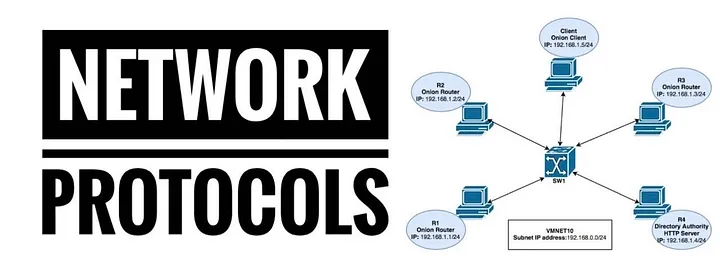
1) Omni (Stablecoin)
JR Willett proposed the Omni protocol in January 2012, which is a digital currency and communication protocol based on the Bitcoin blockchain, utilizing the Bitcoin blockchain to implement smart contracts, user assets, and decentralized peer-to-peer exchanges. In 2014, USDT was the first stablecoin issued on the Bitcoin blockchain based on the Omni Layer protocol. Since then, it has gained a first-mover advantage, dominating the cryptocurrency stablecoin market. Omni-USDT based on the Bitcoin network uses BTC addresses for deposits and withdrawals.
2) Colored Coins (Asset Issuance)
Chia, provided by Bram Cohen (also the founder of the BitTorrent protocol), is a more efficient and environmentally friendly cryptocurrency platform. Chia introduces a new consensus mechanism called Proof of Space and Time (PoST), which is an alternative to traditional Proof of Work (PoW) consensus. With the recent market discussion of script protocols, the concept of issuing assets using Bitcoin has been around since 2012.
3) DLC (Scalable Smart Contracts)
On November 4th, according to official sources, DLC.Link announced the launch of dlcBTC, an innovative solution designed to securely support Bitcoin for DeFi operations on Ethereum. It is reported that dlcBTC is planned to be released in February 2024, allowing Bitcoin holders to seamlessly participate in DeFi protocols such as Curve and AAVE without the need for custodians or third parties.
4) Ethscriptions (Ciphertext Protocol for Creating Ethereum Content Transfers)
The earliest Ethscriptions protocol was created in 2016, but Tom Lehman did not develop a product for it until June 17th of this year. Ethscriptions is a ciphertext protocol for creating and transmitting digital content on Ethereum using Transaction Call Data, bypassing the use of storage and execution in smart contracts to apply deterministic protocol rules to EtherCall data to calculate state, enabling mutual trust to determine contract outcomes without notifying predictors and trusting third parties.
5) Multibit (Cross-Chain Bridge)
The main purpose of Multibit is to bridge the Bitcoin network and the Ethereum Virtual Machine (EVM) network by using the cross-chain bridges currently used between the ETH, BNB, and BTC networks, with the primary goal of providing DeFi services for BRC-20 assets.
Conclusion
2023 can be seen as a groundbreaking year for the Bitcoin ecosystem. Despite the ecosystem being in a predicament due to its inherent Turing completeness, the emergence of Inscription has not only shifted market attention to the Bitcoin ecosystem but has also attracted many developers to join the ecosystem. Perhaps we are on the eve of an ecological outbreak, just as the last round of public chain wars at the beginning of the 21st century witnessed the "blossoming" of the ecosystem.
The protocols that stand out in the current situation are worth looking forward to and exploring, but it is worth noting that the circulation and transmission of digital gold have not yet been completed.
Source: Medium Article
免责声明:本文章仅代表作者个人观点,不代表本平台的立场和观点。本文章仅供信息分享,不构成对任何人的任何投资建议。用户与作者之间的任何争议,与本平台无关。如网页中刊载的文章或图片涉及侵权,请提供相关的权利证明和身份证明发送邮件到support@aicoin.com,本平台相关工作人员将会进行核查。
